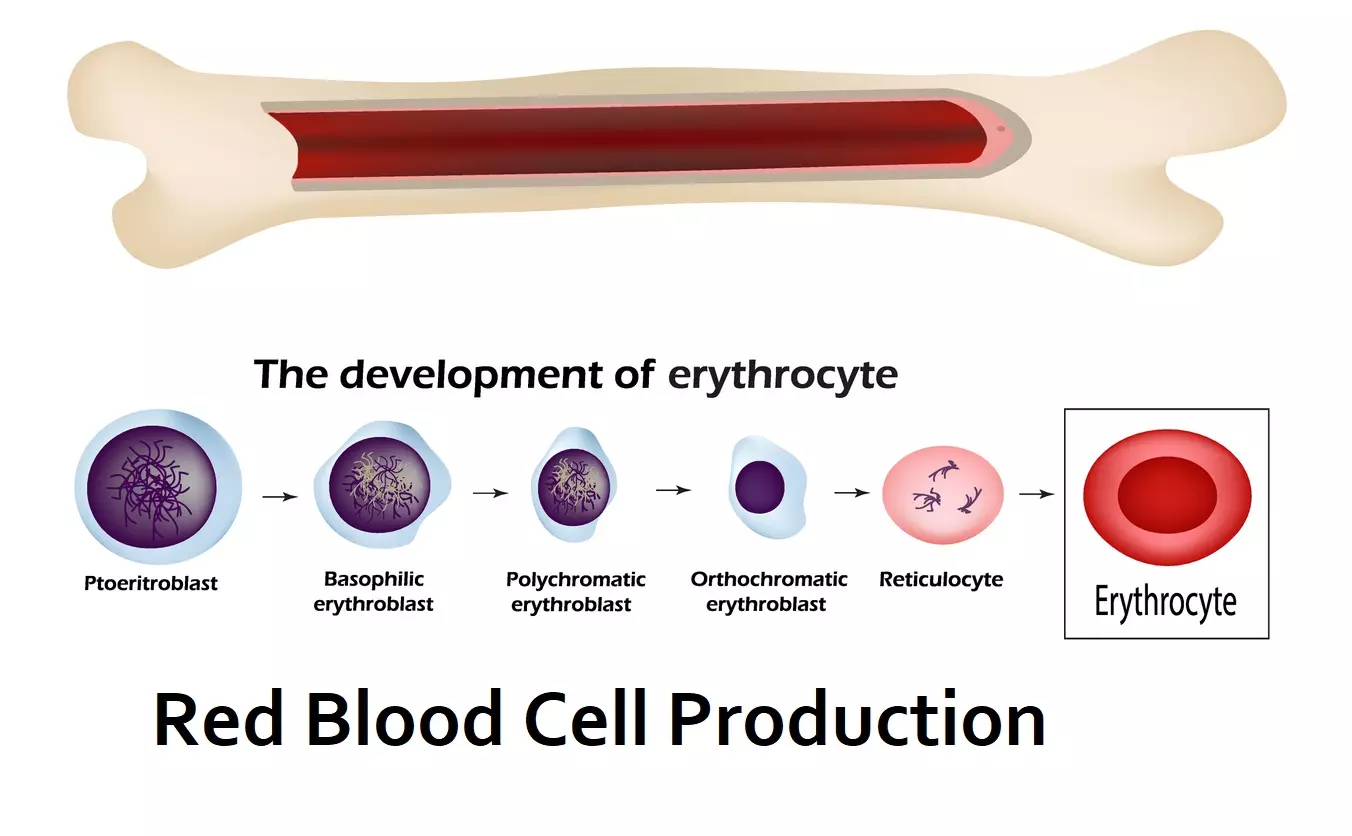[Originally published as Red Blood Cell Evolution Puzzle]
Aristotle (384-322 BC), the ancient Greek philosopher, was the first to use blood to distinguish between vertebrates, noted as “animals with blood,” and invertebrates, noted as “animals without blood.” Fast-forward to the 17th century, Jan Swammerdam, a Dutch naturalist, is credited for the discovery of distinct cells in the blood. Antonie van Leeuwenhoek confirmed Swammerdam ‘s findings six years later, in 1674, using one of the newest technologies of the Renaissance era–a microscope.
Since then, scientists have discovered that circulating red blood cells in mammals have been stripped of their nucleus. This cellular novelty develops over a period of 7-days during a process known as erythropoiesis. While the nucleus is being stripped, each mammalian cell is simultaneously transformed into a unique shape and enclosed in a unique cell membrane. Scientists investigating these molecular novelties, however, continue to encounter perplexing pieces of an ever-increasing complex red blood cell evolution puzzle.
Blood Circulating Oxygen
Red blood cells, also known as erythrocytes, play a critical role in circulating one of life’s most important molecules–oxygen. Hemoglobin transports 30 to 100 times more oxygen than plasma. This process of stripping the red blood cell, known as enucleation, while leaving hemoglobin to transport oxygen, is thought to give mammals a survival advantage. As Anna Rita Migliaccio (right), Professor Mount Sinai, New York, explains in the article “Erythroblast Enucleation,” published in the journal Haematologica:
Enucleated erythrocytes are present in the blood of all mammals, suggesting that enucleation provides an evolutionary advantage.
This “evolutionary advantage” is thought to be an adaptive mechanism in mammals to maximize the efficiency of oxygen transport. As the ScienceDaily article “How immature cells grow up to be red blood cells” explains:
In order to make as much room as possible for the oxygen-carrying hemoglobin, pretty much everything else inside these precursor red blood cells–nucleus, mitochondria, ribosomes and more–gets purged.
Investigating the secrets of Darwin’s “successive slight” changes driving mammalian enucleation is a goldmine opportunity for scientists to uncover the molecular mechanisms of evolution.
Molecular Secrets
Twenty-first century technologies now allow today’s scientists to probe further into the molecular secrets of biology. Daniel Finley, professor of cell biology at Harvard Medical School, has focused on investigating the biochemistry of cells for more than 20 years. In collaboration with Finley, the research team lead by Kota Yanagitan at the University of Cambridge recently published their findings.
The team discovered the enzyme known as UBE20 plays a pivotal role in the enucleation of red blood cells. EBE20 is one enzyme in a class of enzymes known as the ubiquitin-proteasome system (UPS) – a class Finley was the first to identify more than two decades earlier in 1995. According to ScienceDaily, the UPS enzyme system in now known as a quality control surveillance system “to remove unnecessary proteins and keep cells free of clutter.” In their journal of Science paper entitled “UBE20 is a quality control factor for orphan multiprotein complexes,” the opening sentence specifically claims evolution as the driving of this process:
Cells have evolved a wide range of quality control pathways.
To ascribe evolution as the mechanism for the development of the red blood cell, however, Yanagitan must validate this theory of “evolved” with physical evidence using the scientific method. The purpose of the scientific method is to eliminate bias or any preconceived non-scientific based ideas or concepts through the strict use of inductive reasoning. The physical evidence must include observations, measurements, and testing – in the same way Isaac Newton (right) validated his proposed laws of gravity.
Not surprisingly, the research team’s paper does not include any assessment of “evolved” – since “evolved” was simply the authors preconceived process for the origin of life and the universe. And, not surprisingly, evolution is the only theory protected by governmental laws and the courts. Despite opening with “evolved” in the first sentence, the paper’s conclusion wisely excludes any evolution inference:
UBE2O is a self-contained quality control factor that… efficiently target[s]… complexes for degradation.
In a companion report published in the same issue of Science entitled “UBE20 remodels the proteome during terminal erythroid differentiation,” Finley’s team issued their conclusion:
Thus, in reticulocytes [immature red blood cells], the induction of ubiquitinating factors [UBE20] may drive the transition from a complex to a simple proteome.
Importantly, not one aspect of evolution was discussed in either paper.
Two Lobes
Enucleation involves more than enzymes. During this process, a network of protein filaments and tubules in the cells, known as the actin cytoskeleton, divide the original stem cell into two separate lobes. During erythropoiesis, each stem cell with a nucleus undergoes division into two lobes. The nucleus, along with most of the cell’s other molecular machinery, except hemoglobin, is pushed into one lobe; leaving the other lobe with the cell’s hemoglobin without a nucleus. As Mohandas Narla, hematologist at the New York Blood Center, explains in the journal of Blood titled “Exit Strategy: One That Works” (2012):
Enucleation is a multistep process… that requires displacement of the nucleus… formation of a contractive actin ring… [then] pinching off… between [the] 2 lobes.
Erythropoiesis is a high-volume and complex process. In humans, more than 2 million enucleated red blood cells are released into circulation every second. As Narla explains,
The coordination requires complex machinery embracing a number of distinct cytoskeletal proteins and signaling interventions.
Narla gained his Doctor of Science degree from Washington University, St Louis, in 1971. Over the past 30 years, Narla has served on numerous National Institute of Health review and advisory panels, and numerous committees of the American Society of Hematology. Of note, Narla served as director of the Human Genome Project while at the Lawrence Berkley Laboratory, University of California, Berkley–the sponsor of Evolution 101, a state-sponsored evolution education website.
Squeezing Through
The uniqueness of the mammalian red blood cell, however, extends beyond the nucleus. To optimize the cell’s surface area for high rates of oxygen and carbon dioxide exchange, the cell is in the unique shape of an oval bi-concave disk–the disk is indented in the middle of both sides. Along with enucleation and cell shape, even the type of cell membrane material is unique for the cell’s punishing tasks. As Narla and Patrick G. Gallagher of Yale University explain in the journal Blood (2008) article “Red cell membrane: past present and future:”
In performing its primary function of oxygen delivery to the tissues, the red cell must absorb continuous mechanical punishment throughout its lifetime without structural deterioration.
To accomplish these tasks, Narla and Gallagher are quick to point out that each cell membrane is highly elastic; 100-fold more elastic and softer than latex of comparable thickness; responds to fluid stresses within 100 milliseconds; stronger than steel in terms of structural resistance; ready for a life-time of reversible deformations; and squeezing through tiny capillaries one-third the cell’s diameter. Mammalian red blood cells are a wonder of nature.
Many Questions
“Of course,..” explains Narla in the article “Exit strategy: one that works:”
Many questions remain unanswered… The allure of this topic is due, at least in large measure, to the special physiologic demands that the mature mammalian red cell has evolved to meet.
While Narla credits evolution for the producing mammalian red blood cell, “many questions remain unanswered.” Amazingly, without validation with any scientific evidence, Narla makes the following startling illogical conclusion:
This [enucleation] is a problem that evolution has solved, and that is unique to the erythroid system.
The evolution industry has long been awash in blind-eyed dogma without scientific validation. Invertebrate scientists (entomologists) now know that Aristotle’s with or without blood theory differentiating vertebrates from invertebrates was wrong: some invertebrates are certainly “animals with blood.”
Evolution Puzzle
The origin of the mammalian red blood cell is a problem for the theory of evolution. Advances in modern molecular biology is only serving to further undermine, rather than support Darwin’s theory of evolution. As molecular biologist Michael Denton in Evolution; Still a Theory in Crisis explains:
It is surprising that, after years of intense study of this unique phenomenon – one of the ‘simplest’ of all taxa-defining novelties in nature – [scientists] still remark that ‘most molecular events in enucleation remain unclear.’
Since the mid-twentieth century, in the Biochemistry Department of King’s College, London, Denton started his PhD thesis on the evolution of mammalian red blood cell. In following research on the enucleation of the red blood cell for more than 4 decades, Denton draws the following conclusion:
Between the nucleate and the enucleate cell is a quantum jump. There are no known intermediate type of cells between the enucleated mammalian red cell and the nucleated red cells of any other vertebrate species.
Evolution a slow process developing through small incremental steps. Charles Darwin in Charles Darwin included a falsification test for his theory in the Origin of Species:
If it could be demonstrated that any complex organ existed which could not possibly have formed by numerous successive slight modifications [intermediate types], my theory would absolutely break down.
Darwin’s take-away instructions – no intermediate steps, no evolution. Modern technologies have abridged the red blood cell evolution puzzle into a trillion catch-22 pieces.
Genesis
Modern technologies continue to undermine the theory of evolution. Use of advanced technologies, while continuing to undermine the theory of evolution, provide scientific evidence increasingly compatible with the Genesis record written by Moses. Ernest Rutherford (1871–1937), the “father” of nuclear physics commented on our Creator:
Of all created comforts, God is the lender; you are the borrower, not the owner.
And, the distinction between scientists and hobbyists:
That which is not measurable is not science. That which is not physics is stamp collecting.
Biological evolution exists only as a hobbyist’s philosophy, not as a scientific fact.







